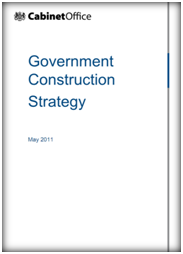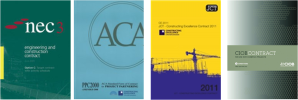Something isn’t working …
I’m relatively new to the world of academia (in the teaching sense that is) having been given the post of university lecturer in September 2010, so I’m finding my voice and slowly understanding the way things get done; and I’m coming to the conclusion things need to change.
Before I say more, I’ve been inspired to write by someone who I never met and who is, sadly, no longer with us. I’ve been inspired by the eulogy stating “there aren’t enough people who are prepared to challenge, consistently and persistently, in pursuit of a better built environment, a better world for future generations to enjoy“. I want to be one of those people.
My selective perception mode is currently picking up loads of vibes encouraging me to challenge the way we educate in the built environment. Below I will identify these vibes, but first I want to take you back a couple of years …
… and my first introduction into lecturing our future professionals of the built environment.
I was asked to lead a number of modules at levels 5 and 6 (this means years 2 and 3 for a full time undergraduate course). I was provided with some module aims and learning outcomes and told I had 36 hours of student contact time to fill, assignments to set that determined how well the students achieve the learning outcomes. Oh, I would also be marking those assignments.
Suffice to say, I have survived (I’m still there after all!) and more to the point I’m really enjoying my new found career.
Or is this the point; what is the purpose of my lecturing?
In my second year I started to appreciate that whilst I intrinsically wanted to be student-centred, I wasn’t. I’ve started to learn how to educate my students more effectively and I’ve started to understand how students learn, because I’ve been learning myself.
But something is not right:
- Do we know if we provide graduates that employers want?
- I teach the students what I think is important (based on learning outcomes obviously), set an assignment that I then mark!
- I teach a piece of a jigsaw (the module), but have not really seen the whole picture! Do the students see the whole picture (which I original typed as hole picture; this might more apt!)
- How do we integrate new things and ways of working into curricula? I’m challenging us to integrate BIM at the moment
- Are we hamstrung by our accrediting bodies; we need our accrediting bodies as they provide an important validation (source of students), but we can’t adapt unless the accrediting bodies agree!
On top of my own experiences, I’ve learnt that:
- Our students are the laziest in Europe1
- The way we teach is outdated2
- Children in the UK are some of the most pressurised, unhappy and commercially vulnerable in the world3
Having stated the negatives, I’m seeing a lot of positives too:
- There is a significant amount of learning taking place in our approaches to education.
- As with everything, education has not stood still over the past 60 years4
- Enrichment helps students learn5,6,7 .
i.e. it can be different.
But relating this to the built environment, the vibes have come from:
- Colleagues that recently visited Denmark and saw a different approach to educating built environment students.
- The Building Futures Think Pieces, which was recommended to me by Sebastian Macmillian (one of the authors). I similarly would encourage everyone to read Sebastian’s view on education in built environment in 20 years.8
- A debate held by Ryder Architecture that has created a blogsite: The Future of Built Environment Education & Practice9
- Discussions with CIC Lifelong Learning director
- And how are we going integrate BIM into our curriculum.
- The debates in my own department about group work, the amount of assessment etc…
So I’m sensing a need for change and I’m sensing that I’m not alone.
I’ll write more on the specific drivers for change, but for now thanks for reading and feel free to add your comments.
Rob
Dedicated to the memory of Mel Starrs and a better world for future generations.
Notes
- Professor Graham Gibbs identified that students at UK universities studied (significantly) less than counterparts in European Universities Improving student learning through assessment and feedback in the new higher education landscape
http://www.youtube.com/watch?v=DbzMTXRBcQk&feature=youtu.be
- Sir Ken Robinson Changing Education Paradigms “The gene pool of education still dictates way we educate is still largely based on the system created for the Industrial Revolution and switches our kids off to learning” http://www.youtube.com/watch?v=zDZFcDGpL4U
- http://www.telegraph.co.uk/education/educationnews/9357146/British-children-unhappiest-in-the-world-say-academics.html
- http://www.kaizen-training.com/tips/celebrating-the-diamond-jubilee
- Ravens Wood School
- University of Westminster Learning and Teaching Symposium 5th July 2012
- My son participated in a fantastic end of year 6 production called The Keymaster based on travelling through time to important dates in history. I bet the kids didn’t even realise they were learning history, but could tell me now things about 1066 up to the Suffragettes ets
- The Future of Architectural Education http://www.buildingfutures.org.uk/think/year/2012
- http://2012bee.blogspot.co.uk/2012/07/future-of-built-environment-education.html?spref=tw




